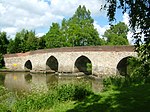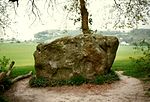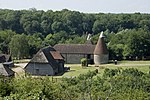Boxley Abbey
1140s establishments in England1540 disestablishments in EnglandBoxleyChristian monasteries established in the 12th centuryCistercian monasteries in England ... and 4 more
Monasteries dissolved under the English ReformationMonasteries in KentReligious organizations established in the 1140sUse British English from June 2015

Boxley Abbey was a Cistercian monastery in Sandling, near Maidstone in Kent, England. It sits at the foot of the North Downs and falls within the parish of Boxley. The abbey was founded around 1146 CE by William of Ypres, leader of King Stephen of England's Flemish mercenaries, and populated by monks from Clairvaux Abbey in Ville-sous-la-Ferté, France. Its ruins can be found north of Maidstone, just northeast of the M20-A229 Sandling Interchange.
Excerpt from the Wikipedia article Boxley Abbey (License: CC BY-SA 3.0, Authors, Images).Boxley Abbey
Geographical coordinates (GPS) Address Nearby Places Show on map
Geographical coordinates (GPS)
| Latitude | Longitude |
|---|---|
| N 51.300154 ° | E 0.52479 ° |
Address
ME14 3BT , Boxley
England, United Kingdom
Open on Google Maps











